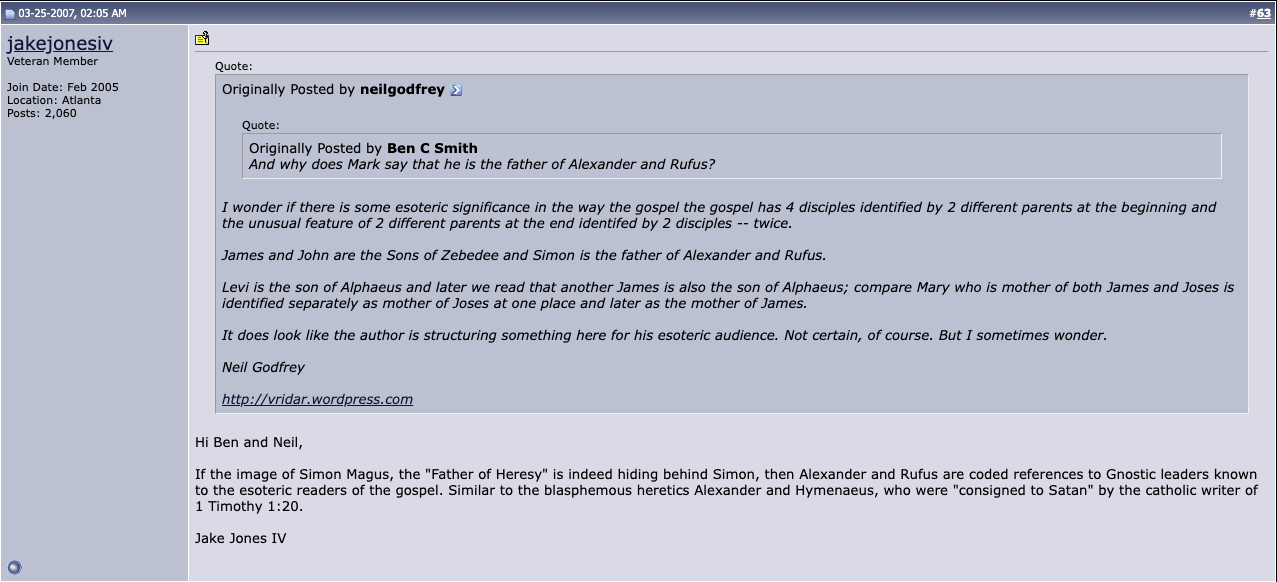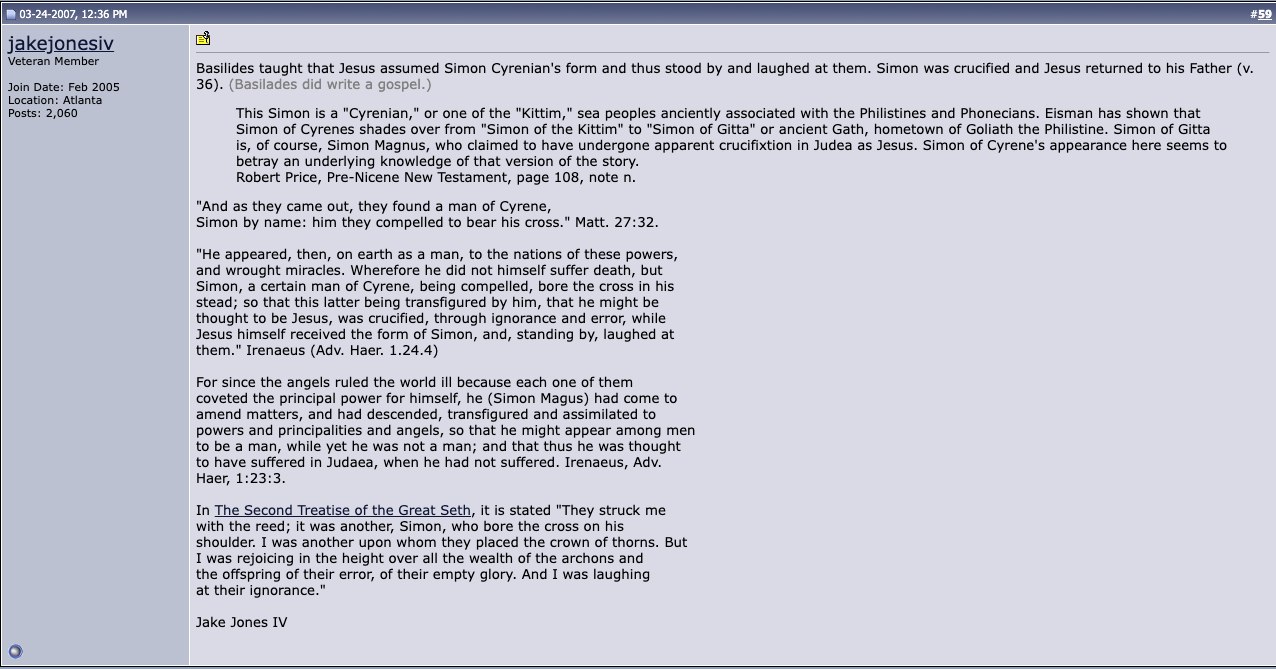JakeJonesIV on the iidb discussion group has offered the most coherent and contextualized explanation of the identity of Alexander and Rufus I’ve heard yet. Check out his posts 4292918 and 4291566. The explanation relates to Robert Price’s comment in his Pre-Nicene New Testament suggesting the possibility that Simon Magus is the figure behind Simon of Cyrene.
——
Note added 21 April 2023: those forum posts links no longer work so here are screenshots of them:
4292918:

4291566:

